Embarking on a journey through the intricate world of helical machined springs is more than just an exploration of engineering marvels – it's a pathway to unlocking innovation, efficiency, and reliability in diverse industries. In this article, I'll guide you through the essential aspects of helical machined springs, from their fundamental workings to practical applications and market trends.
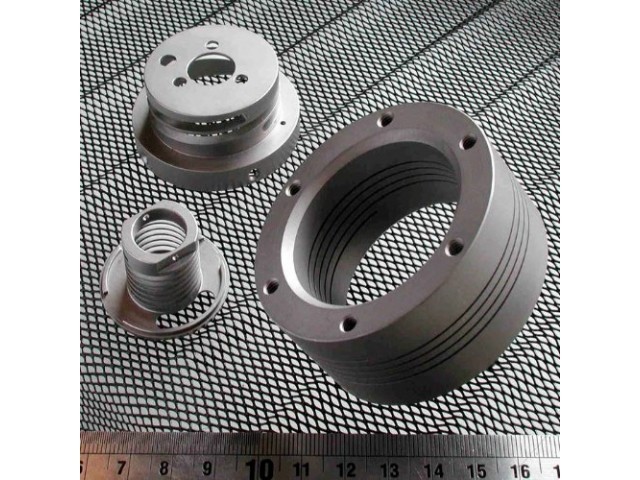
Helical machined springs, intricate marvels of engineering, are integral to a myriad of applications. Compression, tension, and torsion springs collectively form the backbone of mechanical systems, translating mechanical energy into motion and vice versa. A closer look reveals that these springs consist of tightly wound coils, each playing a crucial role in determining the spring's functionality.
The compression springs are designed to resist axial compressive forces, commonly found in shock absorbers and automotive suspension systems. Their cylindrical shape and close-wound coils make them adept at absorbing energy.
On the flip side, tension springs handle axial tension forces, often employed in garage doors and trampolines. The open-wound coils provide the necessary flexibility, elongating under tension and returning to their original state when released.
Lastly, torsion springs excel at resisting rotational forces, prevalent in various applications, including door hinges and clock mechanisms. The helical design allows them to store and release rotational energy efficiently.
Understanding these fundamental aspects sets the stage for exploring the manufacturing intricacies of helical machined springs.
Crafting helical machined springs is a meticulous process that demands precision and adherence to strict quality standards. The journey begins with material selection, a critical factor influencing the spring's durability, strength, and performance.
Common materials for helical springs include high-carbon steel, stainless steel, and alloy steels, each chosen based on the specific application requirements. For instance, stainless steel offers corrosion resistance, making it suitable for applications in harsh environments.
Once the material is selected, the process involves precision machining and forming. Computer Numerical Control (CNC) machines are often employed to ensure accuracy in shaping the coils. The spring's pitch, diameter, and number of coils are meticulously controlled during this phase.
To enhance the spring's resilience, a crucial step is heat treatment. This process involves subjecting the spring to high temperatures and then cooling it rapidly to improve its hardness and strength. Proper heat treatment is paramount to prevent issues such as premature fatigue and deformation.
Quality control measures, including rigorous inspection and testing, form the final stage of the manufacturing process. Non-destructive testing methods like ultrasonic testing ensure that the springs meet stringent quality standards.
This meticulous craftsmanship ensures that helical machined springs not only meet but often exceed performance expectations in various applications. As we delve deeper into their applications across industries, we'll witness the true versatility of these mechanical wonders.
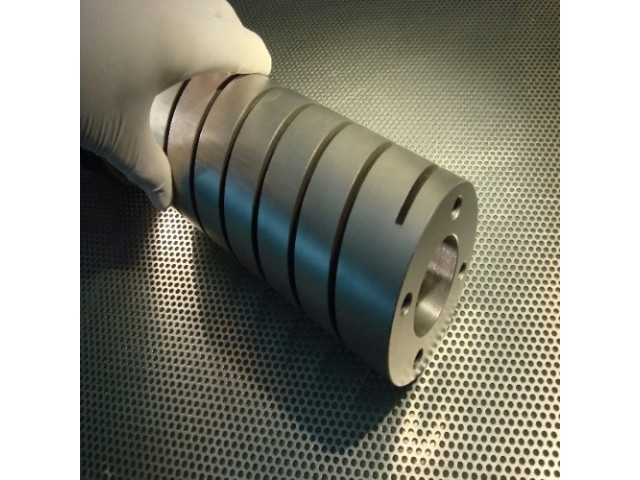
Helical machined springs find themselves indispensable in a multitude of industries, where their mechanical prowess plays a pivotal role in ensuring optimal functionality.
In the automotive realm, these springs are the unsung heroes behind smooth rides and vehicle stability. Compression springs absorb shocks, providing comfort to passengers, while torsion springs assist in various mechanisms like trunk lids and convertible tops. The automotive industry's relentless pursuit of lightweight materials and enhanced durability continually pushes the boundaries of spring design.
Mechanical systems, ranging from simple machinery to complex manufacturing equipment, heavily rely on helical machined springs. Tension springs maintain belt tension in conveyors, ensuring efficient material handling. The precision required in manufacturing often demands custom-designed springs to meet specific load and space constraints.
In the aerospace industry, where every component's weight is critical, the selection of helical machined springs is strategic. Their ability to provide controlled force and withstand extreme conditions makes them ideal for applications such as landing gear systems and control surfaces.
On a smaller scale, these springs play a crucial role in the functionality of various electronic devices and consumer goods. Compression springs are found in switches and connectors, ensuring proper contact, while torsion springs contribute to the smooth operation of hinges and latches in laptops and mobile phones.
Precision and reliability are paramount in medical devices. Helical machined springs are integral to various medical applications, such as insulin pumps and surgical instruments. Their ability to provide consistent force is critical in devices where accuracy is non-negotiable.
Understanding the diverse applications sets the stage for comprehending the intricate design principles that engineers adhere to when creating helical machined springs.
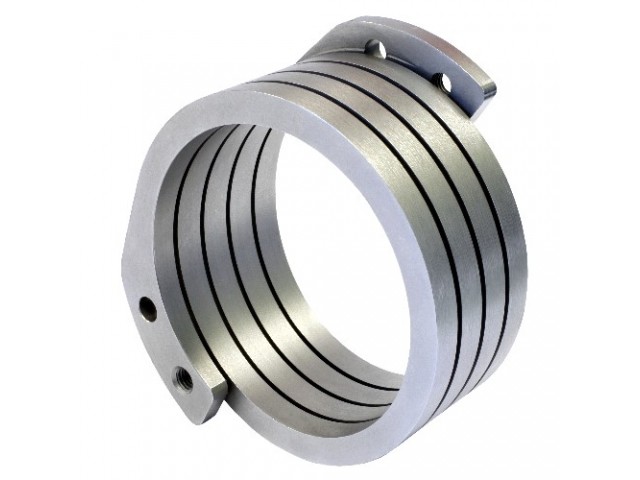
Designing helical machined springs is both an art and a science, requiring a meticulous approach to ensure optimal performance and longevity.
The choice of material is the foundation of spring design. The specific application dictates whether high-carbon steel, stainless steel, or alloys are most suitable. Corrosion resistance, tensile strength, and temperature stability are key considerations guiding this decision-making process.
Critical dimensions such as wire diameter, coil diameter, and free length directly influence a spring's behavior. Engineers employ mathematical formulas and simulations to calculate these dimensions based on the desired spring characteristics.
Understanding the stresses a spring will endure is crucial for its design. Finite Element Analysis (FEA) is often employed to simulate real-world conditions and ensure that the spring can withstand the expected loads without failing prematurely.
The design of the ends of the spring, known as the end configuration, is tailored to the application's needs. Whether it's squared, closed and ground, or open, the end configuration influences the spring's interaction with other components.
The surface finish of a spring impacts its fatigue life and corrosion resistance. Post-machining treatments, such as shot peening or pvd coating applications, enhance the spring's durability and performance.
Understanding the environmental conditions in which the spring will operate is crucial. Factors such as temperature variations, exposure to corrosive substances, and frequency of loading guide decisions on material coatings and treatments.
Before mass production, engineers often create prototypes for testing. This phase allows for adjustments and fine-tuning based on real-world performance, ensuring that the final product meets or exceeds expectations.
By adhering to these design principles, engineers create helical machined springs that not only meet the immediate needs of a specific application but also stand the test of time.
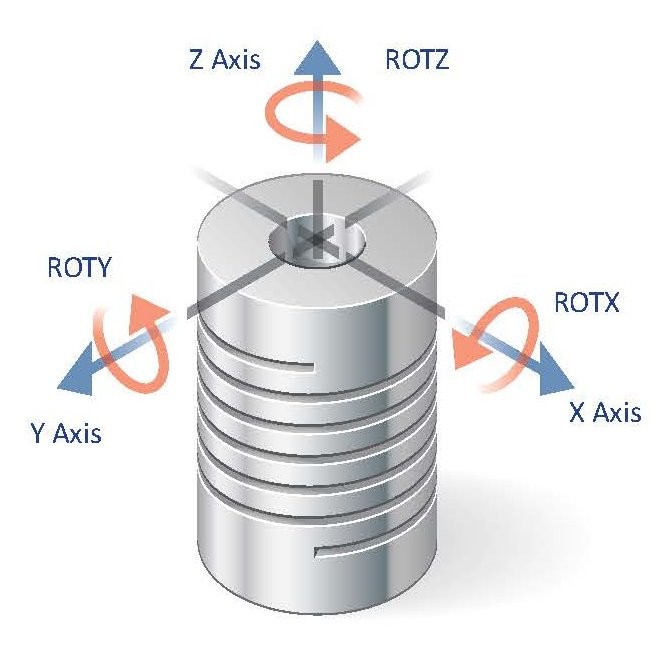
While helical machined springs are engineering marvels, they are not immune to challenges. Recognizing and effectively addressing these challenges ensures the continued reliability and performance of these crucial components.
Solution: Material Selection and Design Optimization
Spring fatigue, characterized by the gradual weakening of a spring over time due to repeated loading and unloading, is a common challenge. Engineers combat this by selecting materials with high fatigue resistance and optimizing the design to distribute stress evenly across the coils. Regular inspections and scheduled replacements also help mitigate the effects of fatigue.
Solution: Adequate Stress Analysis and Prototyping
Excessive load can lead to permanent deformation of a spring. Thorough stress analysis during the design phase, coupled with prototyping and testing, ensures that the spring can withstand the intended load without undergoing plastic deformation. Material choices and proper heat treatment contribute to the spring's ability to return to its original shape after deformation.
Solution: Corrosion-Resistant Coatings and Materials
Springs operating in corrosive environments face the risk of deterioration. Utilizing corrosion-resistant materials and applying protective coatings, such as zinc plating or powder coating, shields the springs from environmental elements. Regular maintenance checks are essential to identify signs of corrosion early on.
Solution: CNC Machining and Quality Control Measures
Inaccuracies in the manufacturing process can lead to suboptimal performance. Utilizing CNC machining ensures precision in shaping coils and maintaining dimensional accuracy. Additionally, stringent quality control measures, including dimensional inspections and non-destructive testing, identify and rectify any deviations from the specified standards.
Solution: Rigorous Testing and Calibration
In applications requiring precise force output, inconsistency can be detrimental. Rigorous testing, calibration, and adherence to design specifications during the manufacturing process guarantee the springs' ability to provide consistent force. Regular recalibration, especially in critical applications like medical devices, ensures ongoing accuracy.
Addressing these challenges head-on ensures the longevity and reliability of helical machined springs. As we shift our focus to the market trends shaping the industry, it's crucial to stay abreast of technological advancements and emerging innovations.
The world of helical machined springs is dynamic, with ongoing advancements shaping their role in various industries. Staying informed about market trends is essential for manufacturers, engineers, and end-users seeking cutting-edge solutions.
The advent of Industry 4.0 has led to the integration of smart technologies in manufacturing processes. Sensor-equipped springs, capable of monitoring factors like load, temperature, and stress in real-time, enable predictive maintenance and enhance overall system efficiency.
Driven by the need for fuel efficiency in automotive and aerospace applications, there's a growing emphasis on lightweight materials and design optimization. Springs designed to offer maximum strength with minimal weight are becoming increasingly prevalent.
The demand for customized solutions is on the rise. Manufacturers offering prototyping services allow engineers to test and iterate designs before mass production, reducing time-to-market and ensuring the perfect fit for specific applications.
Sustainable practices in manufacturing are gaining traction. From utilizing eco-friendly materials to optimizing production processes for minimal waste, there's a shift towards environmentally conscious manufacturing practices within the helical machined springs industry.
The integration of nanotechnology in materials and coatings is enhancing the performance and durability of helical machined springs. Nanomaterials exhibit unique mechanical properties, contributing to increased strength and wear resistance.
As the industry adapts to these trends, it's crucial for stakeholders to stay informed and embrace innovation.
Selecting the right supplier for helical machined springs is a decision that profoundly impacts the success of your projects. From ensuring high-quality products to reliable customer service, several factors should guide your choice.
A reputable supplier adheres to stringent quality standards and possesses relevant certifications. Look for suppliers who comply with industry-recognized certifications such as ISO 9001, indicating their commitment to quality management systems.
Evaluate the supplier's production capabilities, including the range of sizes and types of springs they can manufacture. An advanced manufacturing facility equipped with state-of-the-art machinery, such as CNC machines, speaks to the supplier's commitment to precision and efficiency.
Different applications demand specific materials. A reliable supplier should showcase expertise in working with various materials, offering guidance on material selection based on your application's requirements.
Projects often require customized solutions. Choose a supplier capable of offering tailored designs and prototyping services. This ensures that the springs meet your unique specifications and perform optimally in your application.
A trustworthy supplier conducts thorough testing and implements robust quality assurance protocols. This includes dimensional inspections, load testing, and non-destructive testing methods. Transparency in their testing procedures reflects their commitment to delivering reliable products.
Consider the supplier's lead times and flexibility in accommodating varying production volumes. A supplier with efficient lead times and the ability to adapt to your project's requirements ensures timely delivery without compromising quality.
While cost is a significant factor, it should not be the sole determinant. Assess the overall value provided by the supplier, considering factors such as product quality, lead times, and customer support. Striking a balance between cost and quality is key.
Seek customer references or read reviews to gauge the supplier's reputation. Feedback from other clients provides valuable insights into the supplier's performance, reliability, and responsiveness to customer needs.
The relationship with a supplier extends beyond the initial transaction. Choose a supplier that offers ongoing customer support, readily addressing queries, providing technical assistance, and ensuring satisfaction throughout the product lifecycle.
Consider a supplier's commitment to environmental sustainability and ethical business practices. Choosing a supplier with a responsible approach to manufacturing aligns with modern expectations for corporate responsibility.
By carefully evaluating these factors, you can make an informed decision when selecting a helical machined spring supplier. Whether you're in the automotive, aerospace, or any other industry, partnering with the right supplier is crucial for the success of your projects.
Quality Standards: Richconn Precision is committed to maintaining high-quality standards. The company holds ISO 9001 certification, ensuring that their manufacturing processes meet rigorous quality management criteria.
State-of-the-Art Facilities: Equipped with advanced CNC machines and a modern manufacturing facility, Richconn demonstrates a commitment to precision and efficiency in producing helical machined springs.
Material Expertise: Richconn Precision showcases expertise in working with various materials, allowing them to provide tailored solutions based on specific application requirements.
Customization and Prototyping: Recognizing the need for customized solutions, Richconn offers prototyping services to ensure that helical machined springs meet unique specifications and perform optimally.
Testing and Quality Assurance: Richconn implements robust testing procedures, including dimensional inspections and load testing, to guarantee the reliability and quality of their springs.
Customer References: Positive customer references and reviews attest to Richconn's reputation for performance, reliability, and responsive customer support.
Environmental Responsibility: Richconn Precision is committed to environmental sustainability and ethical business practices, aligning with modern expectations for responsible manufacturing.
Comprehensive Customer Support: With a focus on ongoing customer support, Richconn ensures that clients receive assistance, technical guidance, and satisfaction throughout the product lifecycle.
Cost Competitiveness: While considering cost, Richconn provides overall value by balancing competitive pricing with product quality, efficient lead times, and customer-centric services.
Choosing Richconn Precision as your helical machined spring supplier aligns with the criteria outlined in the comprehensive guide. Their commitment to quality, customization, and customer satisfaction positions them as a reliable partner for various industries.
Armed with a deep understanding of helical machined springs – from their fundamental workings to applications, design principles, market trends, and supplier considerations – you are now equipped to embark on your projects with confidence. Whether you're an engineer, a manufacturer, or a project manager, the world of helical machined springs offers endless possibilities for innovation, efficiency, and reliability. As you navigate this dynamic landscape, remember that choosing the right components and partners is the key to unlocking success. Here's to a future filled with precision, resilience, and groundbreaking achievements in the realm of helical machined springs!
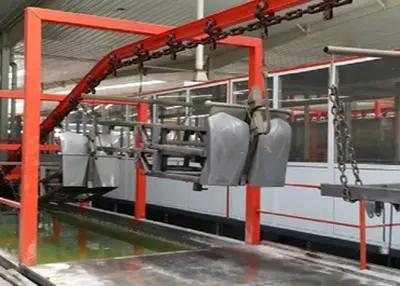 Understanding the Magic of Electrophoresis PlatingJanuary 5, 2024Electrophoresis plating is a fascinating technique that plays a crucial role in several industries. It is a process that involves the deposition of a metallic coating onto a conductive surface through...view
Understanding the Magic of Electrophoresis PlatingJanuary 5, 2024Electrophoresis plating is a fascinating technique that plays a crucial role in several industries. It is a process that involves the deposition of a metallic coating onto a conductive surface through...view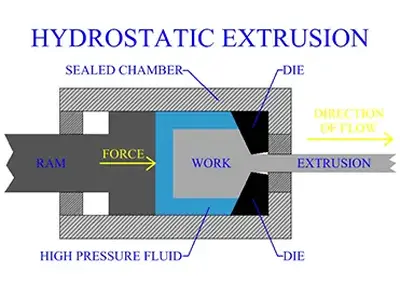 Extrusion: A Manufacturing Process for Creating Various Shapes and ProductsNovember 30, 2023what is extrusion?Extrusion is a process of forcing a material through a die or a nozzle to create a continuous shape or product. The material can be solid, liquid, or semi-solid, and it can be metal,...view
Extrusion: A Manufacturing Process for Creating Various Shapes and ProductsNovember 30, 2023what is extrusion?Extrusion is a process of forcing a material through a die or a nozzle to create a continuous shape or product. The material can be solid, liquid, or semi-solid, and it can be metal,...view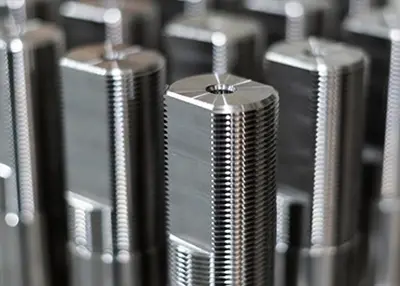 Some Knowledge You Need to Learn About Tapped HoleNovember 16, 2023Do you need taped holes? This article covers the factors you must consider to manufacture the tapped hole during the process.view
Some Knowledge You Need to Learn About Tapped HoleNovember 16, 2023Do you need taped holes? This article covers the factors you must consider to manufacture the tapped hole during the process.view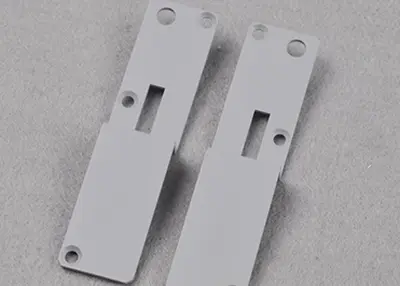 A Strong Piece - Anodized AluminumOctober 12, 2023Did you know that the oxide layer created when anodizing aluminum is almost as hard as a diamond, making it exceptionally resistant to abrasion? It also provides excellent corrosion resistance.view
A Strong Piece - Anodized AluminumOctober 12, 2023Did you know that the oxide layer created when anodizing aluminum is almost as hard as a diamond, making it exceptionally resistant to abrasion? It also provides excellent corrosion resistance.view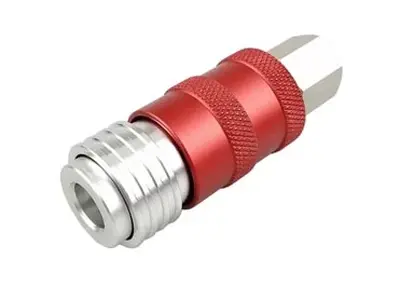 What Is Anodizing: Exploring the Anodizing Process and TypesAugust 31, 2023Anodizing goes beyond surface enhancement; it represents an extraordinary electrochemical transformation that endows a diverse range of metals with exceptional characteristics. If you've ever wond...view
What Is Anodizing: Exploring the Anodizing Process and TypesAugust 31, 2023Anodizing goes beyond surface enhancement; it represents an extraordinary electrochemical transformation that endows a diverse range of metals with exceptional characteristics. If you've ever wond...view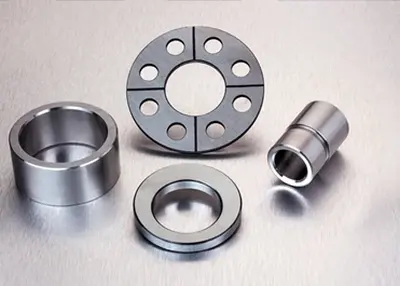 Five Axis CNC Machine Tool: Precision Machining of Carbon Fiber Composite MaterialsMay 22, 2023Further CNC cutting and drilling of raw carbon fiber parts is necessary to meet the precision requirements or assembly needs. According to new material introductions, carbon fiber reinforced composite...view
Five Axis CNC Machine Tool: Precision Machining of Carbon Fiber Composite MaterialsMay 22, 2023Further CNC cutting and drilling of raw carbon fiber parts is necessary to meet the precision requirements or assembly needs. According to new material introductions, carbon fiber reinforced composite...view